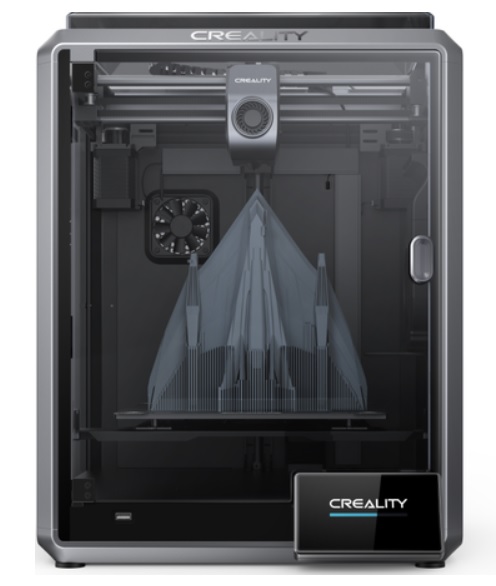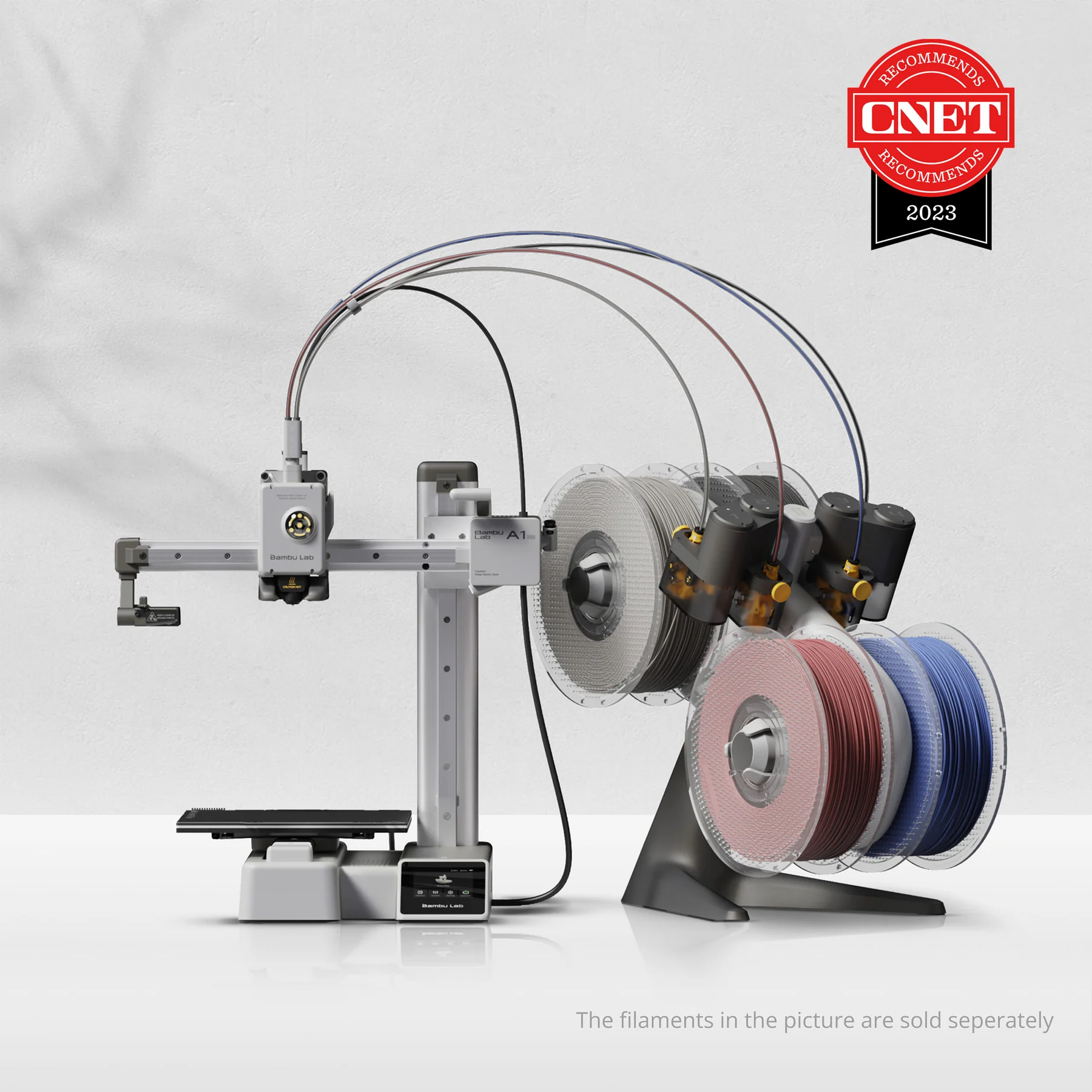Compare K1C vs A1 Mini
Comparison between the best 3D printers
Choose the best 3D printer at the best price. The cheapest 3D printers are here.
Buy a 3D printer here with 3D Fila.
 |
 |
|
| Model | K1C[BUY K1C] |
A1 Mini |
| Printing Material | Filament | Filament |
| Buy Filament for Creality 3D K1C | Buy Filament forBambu Lab A1 Mini | |
| Estimated price | $449,00 | $549,00 |
| Manufacturer | Creality 3D | Bambu Lab |
| Release Year | 2024 | 2023 |
| Print Volume [mm] | 220x220x250 | 180x180x180 |
| Printer Size [mm] | 355x355x480 | 315x347x365 |
| Weight [kg] | 12,4 | 5,5 |
| Power Loss Recovery | YES | YES |
| Enclosed printer | YES | NO |
| Bed Leveling | Automatic | Automatic |
| Filament End Sensor | YES | YES |
| Bed type | Heated | Heated |
| Power supply system | Direct Drive | Direct Drive |
| Standard nozzle | 0,4 | 0,4 |
| Maximum Nozzle Temperature [°C] | 300 | 300 |
| Maximum Bed Temperature [°C] | 120 | 80 |
| Maximum printing speed [mm/s] | 600 | 500 |
| Filament holder | YES | YES |
| Camera for supervision | YES | YES |
| Recommended filaments | ABS, PLA, PETG, PET, TPU, PA, ABS, ASA, PC, PLA-CF, PA-CF, PET-CF | PLA, PETG, TPU, PVA |
| Recommended slicers | Creality Print; Cura, Simplify3D e PrusaSlicer | Bambu Studio, Super Slicer, Cura, Prusa Slicer, Orca |
| Maximum Resolution [mm] | 0,1 | 0,1 |
| Processor | 32-bit Silenciosa | |
| Display | Display touchscreen 4,3'' | Touchscreen 2,4'' |
| Power Supply | 110/220V / 350W | 150 W |
| Connectivity | Ethernet / USB / Wi-Fi | Wifi, Bambu bus, Cartão SD |
| Operating systems | Windows, Mac, Linux | Windows, Linux, Macbook |
| Date of registration in the system | 2024-05-16 | 2024-04-10 |
| Release date | 2024 | 2023 |
| Extra features | The Creality K1C is a fully enclosed CoreXY 3D printer featuring an all-metal extruder, tri-metal Unicorn nozzle for abrasive materials, automatic bed leveling with nozzle cleaning, AI-assisted failure detection, built-in camera for timelapse, enhanced cooling system, root access to Klipper firmware, and compatibility with PLA-CF, PA-CF, PET-CF, TPU, ABS, and more. | The Bambu Lab A1 Mini stands out not only for its impressive speed and automatic calibration, but also for its multi-color printing capability thanks to AMS Lite. This innovative system makes multi-color printing easy, making it accessible to everyone. AMS Lite, specific to the A1 Mini, supports up to four different materials simultaneously, providing creative freedom without complications. With comprehensive sensors for energy monitoring and recovery, a camera for timelapses and Wi-Fi control, the A1 Mini and AMS Lite together offer an intuitive and advanced 3D printing experience, ideal for materials such as PLA, PETG and TPU, and designed for simplicity and fast maintenance with quick-change nozzles. |
| Support for multiple colors and materials (AMS and CFS) | NO | YES |
Notes * |
||
| Cost-benefit | 8 / 10 | 7 / 10 |
| Hardware | 5.4 / 10 | 4.8 / 10 |
| Tela | . | . |
| Print volume | 3 / 10 | 3 / 10 |
| Performance | 5 / 10 | 4 / 10 |
| [BUY K1C] |
Conclusion |
| In conclusion, both the Creality 3D K1C and the Bambu Lab A1 Mini are impressive 3D printers, each with distinct advantages depending on user needs and preferences. The K1C is characterized by its larger build volume, fully enclosed design, and higher maximum printing speeds. It is well-suited for users looking to work with a wide variety of materials, including abrasive types, thanks to its all-metal extruder and specialized nozzle. The automatic bed leveling and enhanced features like AI-assisted failure detection and a built-in camera for monitoring enhance its functionality and user experience. Moreover, its competitive price point adds significant value for users seeking robust performance. Conversely, the A1 Mini excels in multi-color printing capabilities with its AMS Lite system, making it an excellent choice for users who prioritize creativity and ease of use over sheer size. While it has a smaller build volume and lacks a fully enclosed frame, it offers a more accessible user experience, particularly for those focused on certain materials like PLA and PETG. Additionally, the A1 Mini's intuitive design and quick-change nozzles cater to beginners and those who value simplicity and maintenance efficiency. Ultimately, the choice between these printers hinges on individual printing needs: the K1C is ideal for those requiring versatility and increased capability, while the A1 Mini serves as a fantastic entry-level option for creative projects with a focus on ease of use and reliability. Both models deliver strong cost-performance ratios, making them worthy contenders in the 3D printing market. |

